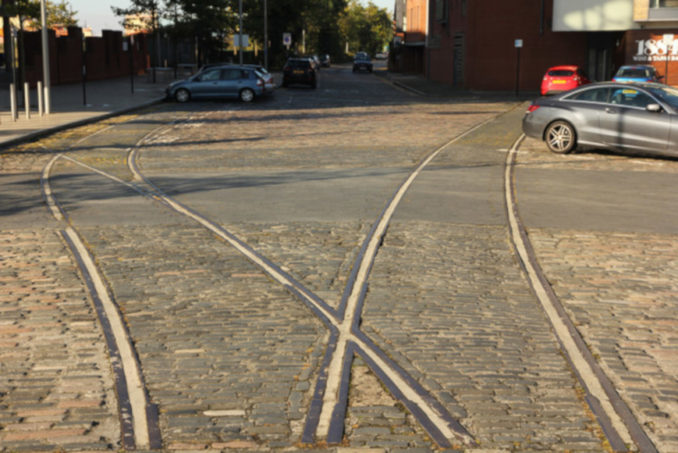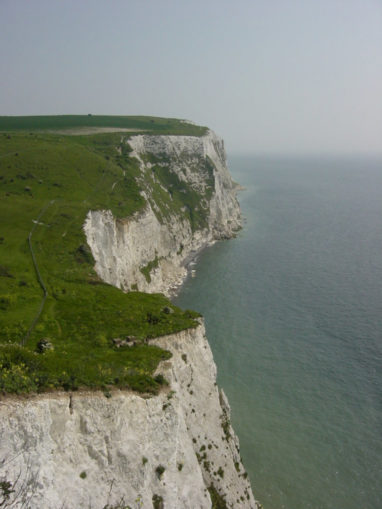Some of you may remember that some time ago I wrote an article about my family tree research and how I’d discovered many interesting things about my family history. One thing I learned was that a part of my family was from fishing stock in Brixham, Devon. In the early 19th century the Torbay area was a very successful fishing ground. Brixham trawlers were developed to carry large sails, allowing them to haul big nets and scoop up ever larger catches.

“Provident Dartmouth 13-07-19” by cvtperson is licensed under CC BY-SA 2.0
When the waters around Brixham were fished out some of my ancestors moved their boats to more productive waters, some along the south coast and others around to East Anglia. I found distant ancestors in the fishing ports of Ramsgate, Margate and Great Yarmouth. The question was though, why did my 3-x great grandmother Kezia Petherbridge end up in Kingston upon Hull? The answer is the “Silver Pit”. Before 1850 Hull wasn’t really a fishing port but two independent events combined to change history. In 1840 the railway, in the form of the Hull and Selby line, came to Hull. It terminated at Hull’s Humber dock. This line connected with the Leeds and Selby railway, which had been built a few years before, and allowed freight landed at the Humber dock to access the infant British railway network.

“Humber Dock” by Richard Croft is licensed under CC BY-SA 2.0
In 1850 a fishing boat, operating out of Scarborough, got caught in a bad North Sea storm. The boat lost a lot of its gear, but managed to struggle to safety in Hull where it was found that its remaining nets were packed with flat fish. The crew figured out that all these fish had been caught in a particularly deep section of water about 40 miles off the mouth of the Humber. The “Silver Pit” was discovered and fishing boats began to arrive in Hull. The Brixham trawler was ideally suited for this particular kind of fishing. Its large sails meant it was able to make the 40 miles to the pit quickly and it had the large nets able to haul big catches. The railway was already at the dock, meaning that fresh fish could be quickly transported to Metropolitan areas and consequently trade boomed. It seems my 3-x great grandmother was crew on her brother’s trawler when it moved from Great Yarmouth to Hull to take advantage of the Silver Pit. In Hull she met and married John Brocklesby, who was also a fisherman and, as they say, the rest is history.
Having worked out why Kezia came to Hull I took a little detour from my family history research to look into what the Silver Pit actually is. I quickly discovered that there were in fact two areas, the Silver Pit and the much larger Outer Silver Pit. Their existence goes back to pre-glacial days, when Britain was still joined to the continent by what is now known as Doggerland. The Silver Pit is a long thin underwater valley and the current theory is that it was caused by a confluence of the river Wash (now known as the Great Ouse) and the Humber. It cut its way north through Doggerland, from what we now call The Wash, into the North Sea that at that time only reached as far south as the Newcastle area. Over centuries the land sank and tilted under the weight of glaciers and the area flooded at the end of the Ice Age, increasing sea level. The resulting underwater valley proved to be an ideal sanctuary for fish, in particular flat fish, to shoal during bad weather.

“Doggerland” by thekeithhall is licensed under CC BY 2.0
The Outer Silver Pit is another valley in the bed of the North Sea, only further out and a little further north. The valley, at its nearest point to land, is about 75 miles off Flamborough Head and lies between what is now called Dogger Bank and the ridge that divides the Northern and Southern North Sea basins. This ridge runs from Norfolk to Friesland. This area appears to have been a large lake in Doggerland around 20,000 BC, when glaciers covered much of northern Britain, northern Scandinavia and the northern half of Doggerland. There are two main theories as to the how this lake was formed but it seems they both agree that the western end of the lake was drained by another river that once again flowed north to open sea. Today, North Sea fishermen often haul up reminders of Doggerland, ranging from chunks of fossilised wood to ancient tools and animal bones.
Doggerland is believed to have been a low-lying marshy area, drained by several minor rivers, which flowed south into a lake which we now know as Outer Silver Pit. One theory is that the lake was fed by several large rivers including what we now call the Thames, the Rhine, the Maas and the Scheldt. The alternative theory is that the lake was fed by the Urstrom river, which geologists say drained the north German plain and Scandinavia. Once again this underwater North Sea valley became a haven for fish. At the end of the last Ice Age it’s believed that the lake which became the Outer Silver Pit disappeared as sea levels rose, although this is only supposition. Of course, land had sunk under the weight of ice and risen where there was no ice present causing the land to tilt but the melting ice also increased sea levels. Two other events occurred almost simultaneously, also affecting sea levels. huge amounts of water were released by the collapse of a vast glacial lake in North America and a massive tsunami caused by an underwater landslide off Norway. At this time the south of England was linked to France by the massive chalk Weald–Artois Anticline, where the straits of Dover are now located. It’s believed that it was breached by a combination of the Seine, the Rhine and the Thames which had turned to run south as land rose, to form a massive lake.

“Dover Cliffs” by Peter Huys is licensed under CC BY-SA 2.0
The lake eventually became so big that it breached the Anticline. The rivers then flowed through the breach in the chalk, eroding its sides into what we now know as the English Channel. Isn’t it strange what you discover when you start researching your Family Tree?
© WorthingGooner 2020
The Goodnight Vienna Audio file
Audio Player


